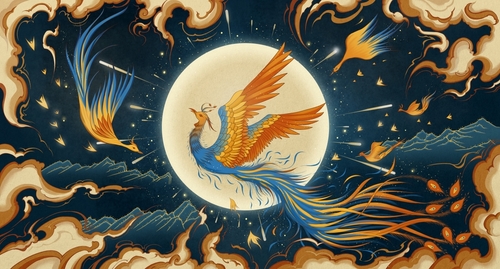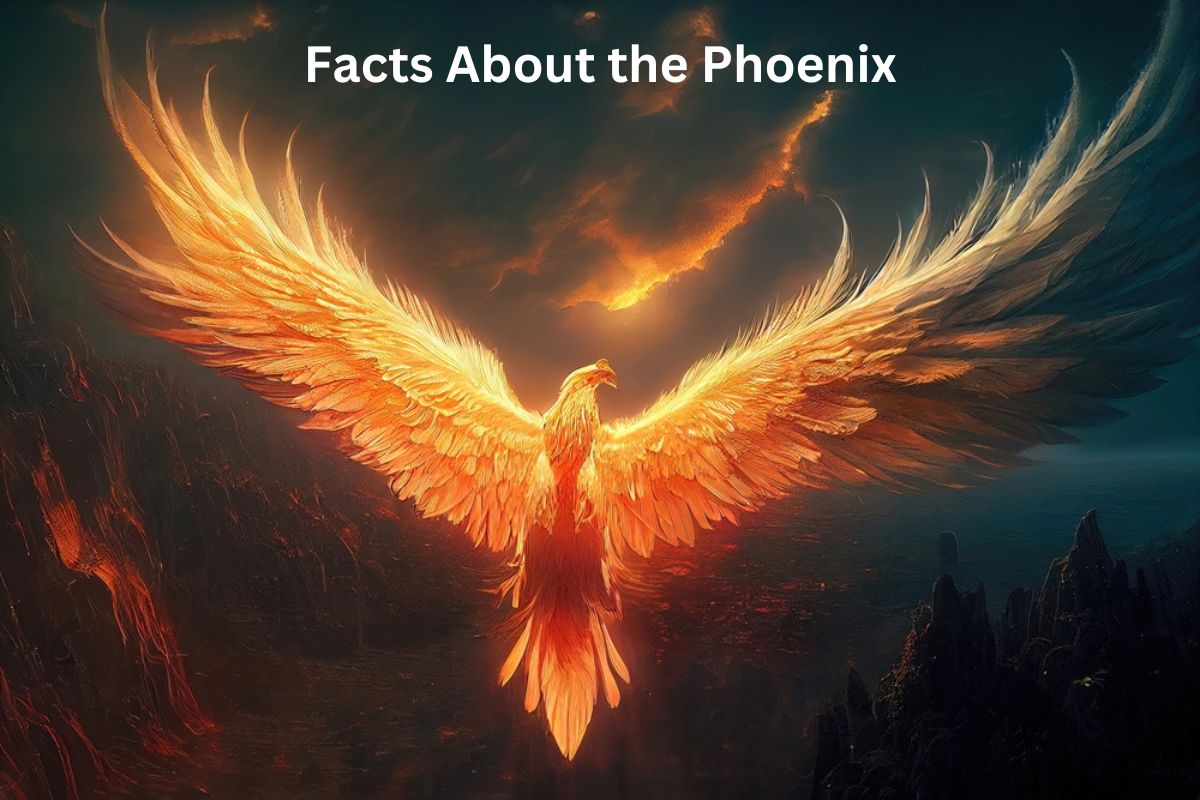The Phoenix is a mythical creature that holds a prominent place in various cultures and mythologies. Depicted as a bird with colorful plumage, it symbolizes themes of rebirth, immortality, and transformation.
Associated with the sun, the Phoenix represents the cyclical nature of life and the rejuvenating power of the sun’s energy. It appears in Greek, Roman, Egyptian, and Chinese mythologies, each culture imbuing it with unique symbolism.
The Phoenix’s enduring popularity is reflected in its presence in art, literature, and popular culture. Its name has inspired the city of Phoenix in Arizona, and it serves as a mascot for institutions like the University of Chicago and the Phoenix Suns basketball team.
The Phoenix constellation in the southern sky further perpetuates its symbolic significance.
The mythical Phoenix continues to captivate our imagination and stands as a symbol of hope, resilience, and the eternal cycle of life.
The Phoenix Facts
1. Mythological creature in various cultures
The Phoenix is a mythological creature that appears in various cultures and mythologies. It has a rich history and can be found in different forms across different civilizations.
Also Read: Facts About Theseus
It is mentioned in ancient Greek mythology as well as Roman, Egyptian, and Chinese mythologies, among others. The wide prevalence of the Phoenix in different cultures showcases its enduring appeal and significance.

2. Depicted as a bird with colorful plumage
The Phoenix is typically depicted as a bird with colorful plumage. It is often described as having vibrant feathers in shades of red, gold, and orange.
Also Read: Hydra Facts
Its appearance is associated with beauty and majesty, capturing the imagination of those who encounter its portrayal in stories, art, and symbolism.
3. Symbolizes rebirth and immortality
One of the central themes associated with the Phoenix is its symbolism of rebirth and immortality. According to mythology, the Phoenix has the extraordinary ability to regenerate itself.
It lives for hundreds of years before undergoing a transformative process in which it ignites itself in flames and is consumed by fire. From the ashes, a new Phoenix is born, representing a cycle of death and rebirth.
This concept of the Phoenix rising from its own ashes has become a powerful metaphor for renewal, resilience, and the triumph of life over death. The Phoenix’s ability to overcome destruction and be reborn underscores its association with immortality and the eternal cycle of life.
4. Associated with the sun and renewal
The Phoenix is often associated with the sun and is considered a symbol of renewal and transformation. Its connection to the sun stems from its fiery nature and its ability to be consumed by flames only to rise again.
The Phoenix’s association with the sun emphasizes its role in representing the cyclical nature of life, the rising and setting of the sun, and the passage of time. It is seen as a symbol of the rejuvenating power of the sun and the transformative energy it brings.
5. Known as the Bennu bird in Egyptian mythology
In Egyptian mythology, the Phoenix was known as the Bennu bird. It was closely associated with the sun god Ra and believed to be a manifestation of his spirit. The Bennu bird was often depicted as a heron or a stork-like bird.
It was believed to reside in the sacred Benben stone, which represented the primordial mound from which the world was created.
The Bennu bird symbolized creation, rebirth, and the eternal nature of the soul. Its flight across the sky was considered a divine occurrence and was connected to the sun’s daily journey.

6. Also called Fenghuang in Chinese mythology
Chinese mythology also features a version of the Phoenix known as the Fenghuang. The Fenghuang is often depicted as a composite creature, combining the features of various birds, such as the head of a pheasant, the body of a mandarin duck, the tail of a peacock, and the wings of a golden cockerel.
The Fenghuang represents virtue, grace, and the union of yin and yang, symbolizing harmony and balance. It is seen as a benevolent creature associated with positive qualities and is often considered a symbol of good fortune, prosperity, and marital bliss.
The Fenghuang’s presence in Chinese mythology reflects the cultural significance of the Phoenix as a symbol of auspiciousness and harmony within the Chinese tradition.
7. Appears in art, literature, and popular culture
The Phoenix’s captivating image and symbolism have made it a popular motif in various forms of art, literature, and popular culture. It has appeared in numerous books, poems, paintings, sculptures, and other artistic mediums.
Its representation often evokes themes of resurrection, hope, and the triumph of good over evil. The enduring popularity of the Phoenix in art showcases its universal appeal and its ability to inspire and captivate audiences across different cultures and time periods.
8. Inspired the name of the city of Phoenix, Arizona
The city of Phoenix, located in the state of Arizona, United States, derives its name from the Phoenix bird. The city’s name was chosen to symbolize its growth and development from the ruins of the former settlement of Swilling’s Mill.
Just like the Phoenix rises from its ashes, the city of Phoenix represents rebirth, resilience, and the ability to overcome challenges. It serves as a powerful symbol for the city’s history and its continuous progress and revitalization.
9. Mascot of the University of Chicago and Phoenix Suns
The Phoenix has been adopted as a symbol in various organizations and institutions. For example, the Phoenix is the mascot of the University of Chicago.
The university chose the Phoenix as its emblem to represent the transformative power of education and the pursuit of knowledge. Additionally, the Phoenix is the logo and team name of the Phoenix Suns, a professional basketball team in the NBA.
The team’s name reflects the vibrant energy, resilience, and competitive spirit associated with the mythological bird.
10. Minor constellation in the southern sky
The Phoenix constellation, also known as the “Bird of Paradise,” is a minor constellation in the southern sky. It was first introduced by Dutch astronomer Petrus Plancius in the late 16th century.
Although it is not as prominent as some of the major constellations, the Phoenix constellation serves as a celestial representation of the mythical bird.
Its inclusion in the night sky allows stargazers and astronomers to connect the celestial realm with the symbolism and mythology surrounding the Phoenix, further perpetuating its significance in human culture and imagination.
